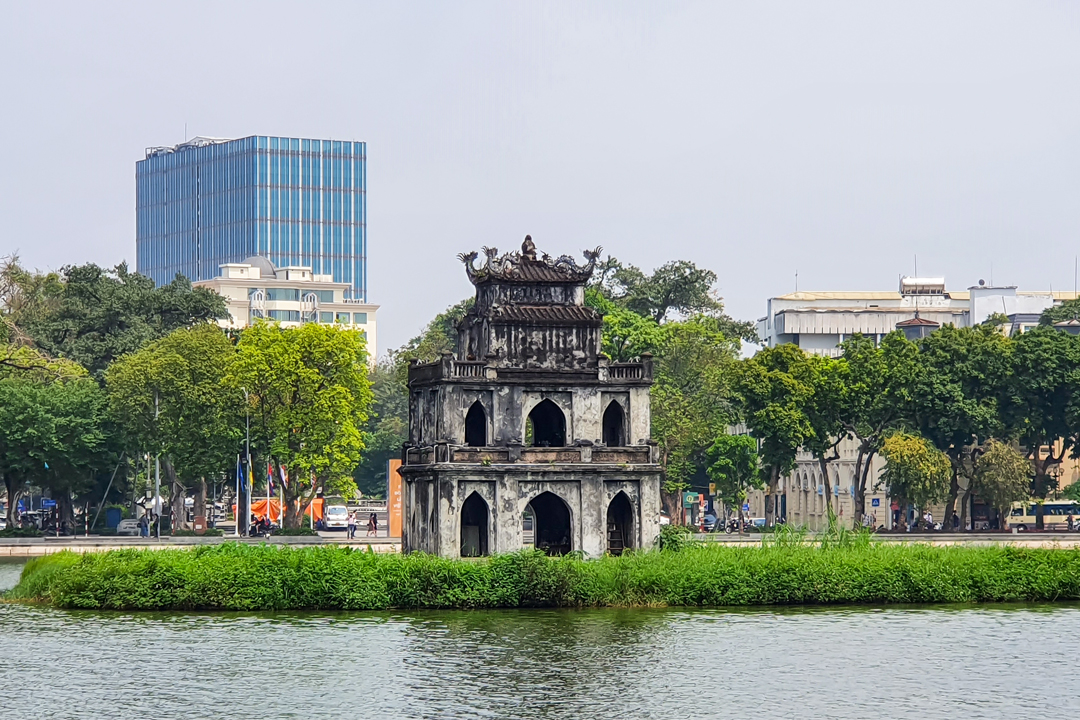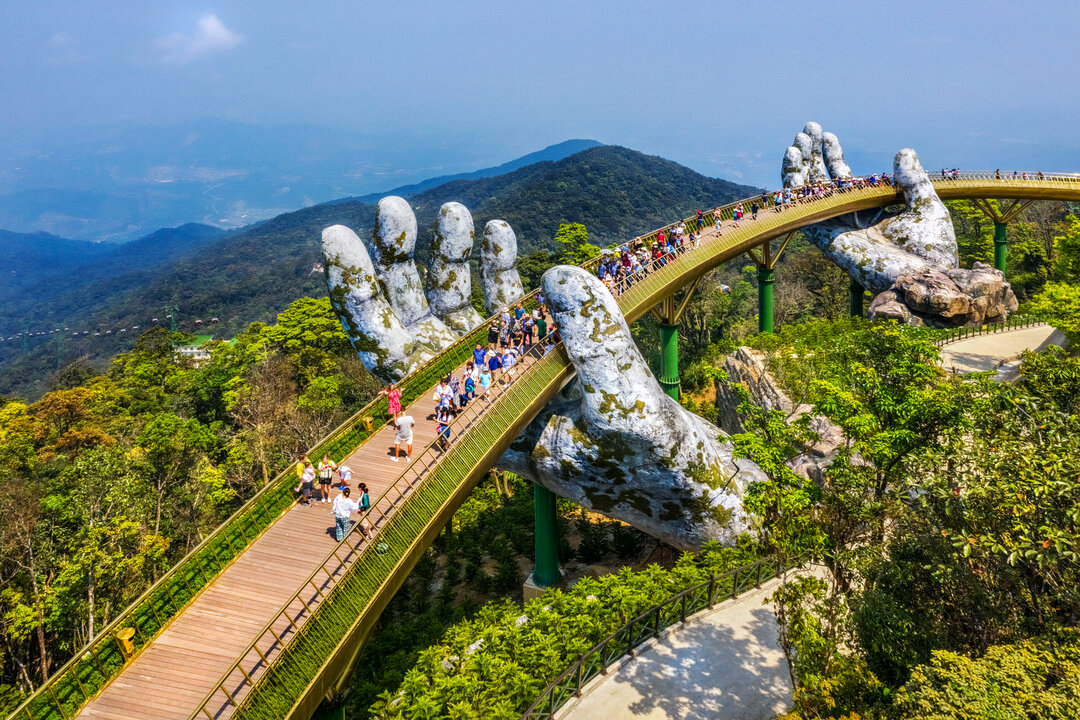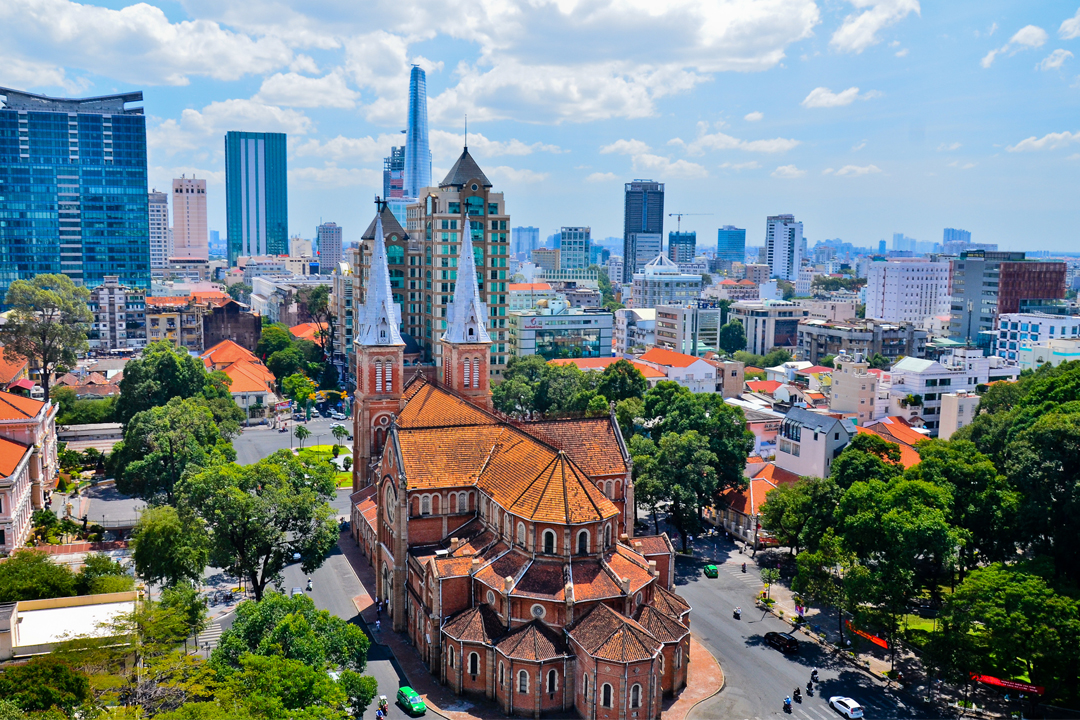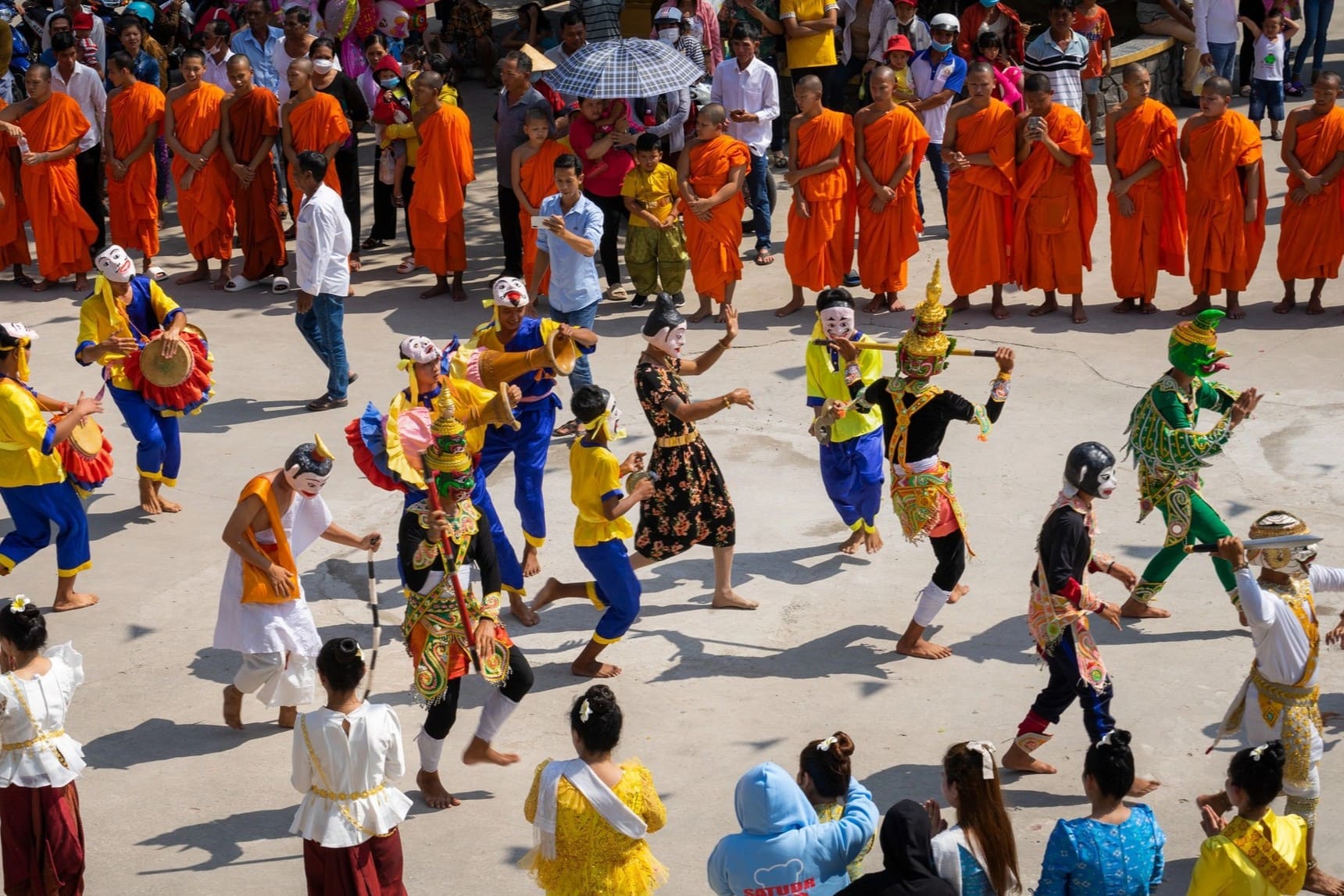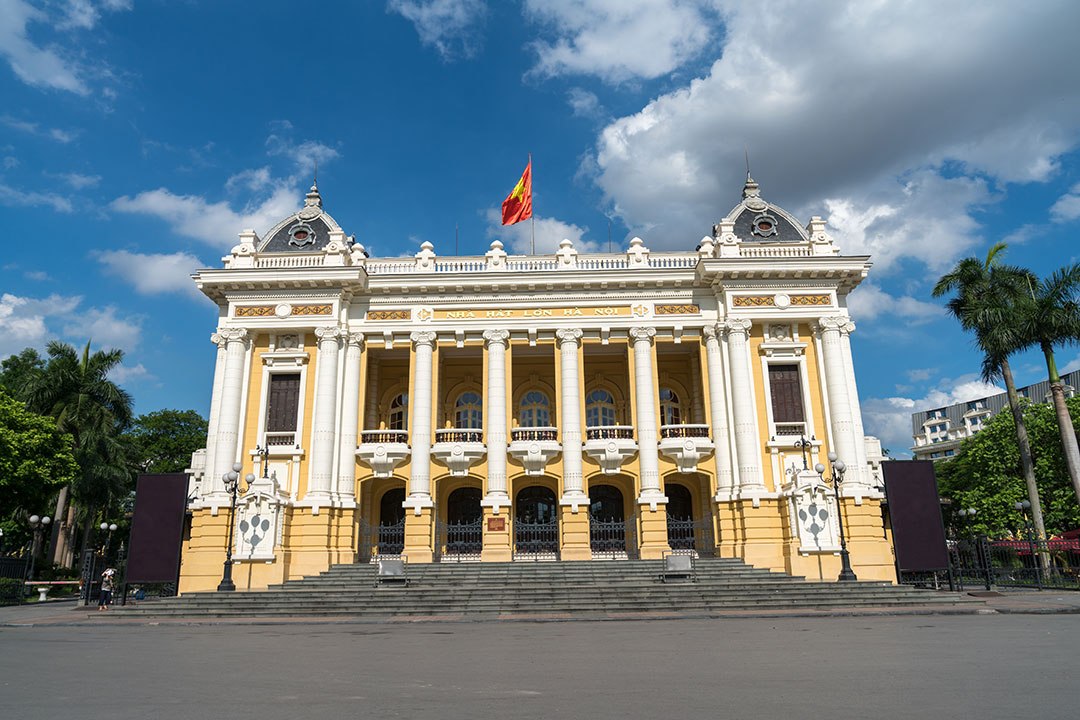Hanoi Opera House: History, Architecture, Ticket Prices & Travel Guide
Hanoi Opera House is a majestic landmark in the heart of Vietnam’s capital, blending French colonial elegance with the country’s cultural heritage. More than just a venue for world-class performances, it stands as a living monument to Hanoi’s artistic and historical evolution. With GTrip’s guide, you’ll uncover its rich legacy, admire its neoclassical and baroque-inspired architecture, and get practical tips on how to visit, from directions to photo spots, ensuring the best experience at this iconic building.
Where is the Hanoi Opera House?
Address: 1 Trang Tien Street, Cua Nam Ward (1 Trang Tien Street, Phan Chu Trinh Ward, Hoan Kiem District, Hanoi)
The Hanoi Opera House is majestically situated at Ba Dinh Square (Revolution Square), a major traffic circle in the heart of Hanoi's elegant French Quarter. Its prime location in the former Hoan Kiem District makes it incredibly accessible and places it just a short stroll from other iconic landmarks, including the famous Hoan Kiem Lake and the National Museum of Vietnamese History. Surrounded by colonial-era architecture and luxury hotels, this central positioning ensures it's an unmissable stop on any walking tour exploring the cultural and historical core of Vietnam's capital.
The history and legacy of Hanoi Opera House
Hanoi Opera House's history and facts reveal a rich and complex past intertwined with Vietnam’s colonial period, cultural evolution, and national identity. Built between 1901 and 1911 by French architects inspired by the Palais Garnier in Paris, the opera house was a symbol of French cultural influence in French colonial architecture in Hanoi. Designed to host European-style operas and performances for the elite, it stood as a grand representation of Western artistic traditions in the heart of Vietnam’s capital.
Beyond its architectural grandeur, the opera house became a witness to major historical shifts. During the early 20th century, it was not just a venue for entertainment but also a stage for political and revolutionary activities. In 1945, it played a crucial role in Vietnam’s independence movement when the Viet Minh used its premises to announce revolutionary messages. Over the decades, it has remained an emblem of resilience, adapting to the country’s political and cultural transformations.
As Vietnam’s cultural landscape evolved, the Vietnam National Symphony Orchestra and other prestigious performing arts organizations found their home within the opera house. The venue has hosted countless classical concerts, traditional Vietnamese performances, and international events, cementing its status as a leading center for the arts. Today, it stands as a bridge between Vietnam’s colonial past and its modern artistic ambitions, drawing both history enthusiasts and art lovers alike.
Beyond its historical significance, the Hanoi Opera House captivates people with its architectural features, blending neoclassical and baroque styles. The next section explores the intricate design elements that make it one of the most stunning landmarks in Hanoi.
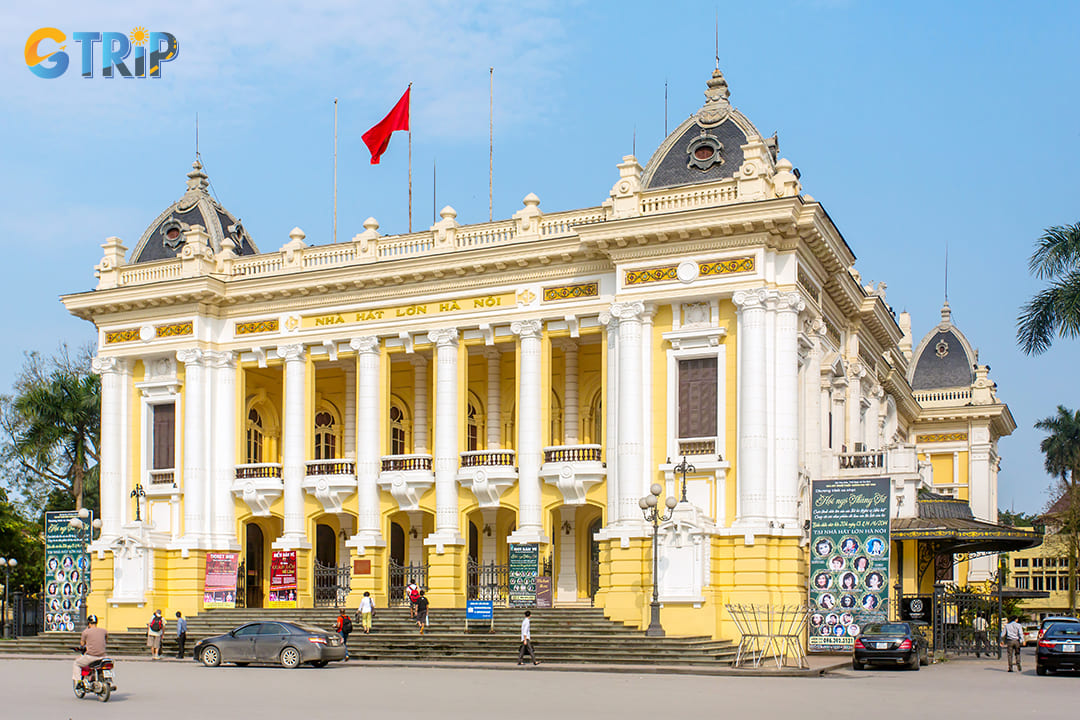
Hanoi Opera House stands as a bridge between Vietnam’s colonial past and its modern artistic ambitions
Hanoi Opera House architecture and design
The Hanoi Opera House architecture style reflects the elegance of French colonial architecture, blending European design elements with local influences. Constructed between 1901 and 1911, the building was designed by architects Harley and Broyer, drawing inspiration from the Palais Garnier in Paris. Its grand exterior, marked by neoclassical columns, ornate balconies, and decorative friezes, symbolizes Hanoi’s cultural legacy.
The facade features a symmetrical design and intricate stone carvings, showcasing meticulous craftsmanship. Large arched windows and wrought-iron railings enhance its sophisticated appearance, while the yellow ochre walls, typical of French colonial buildings, create a striking contrast against Hanoi’s urban backdrop. Tourists approaching the entrance are greeted by a series of steps leading to a grand portico supported by Corinthian columns.
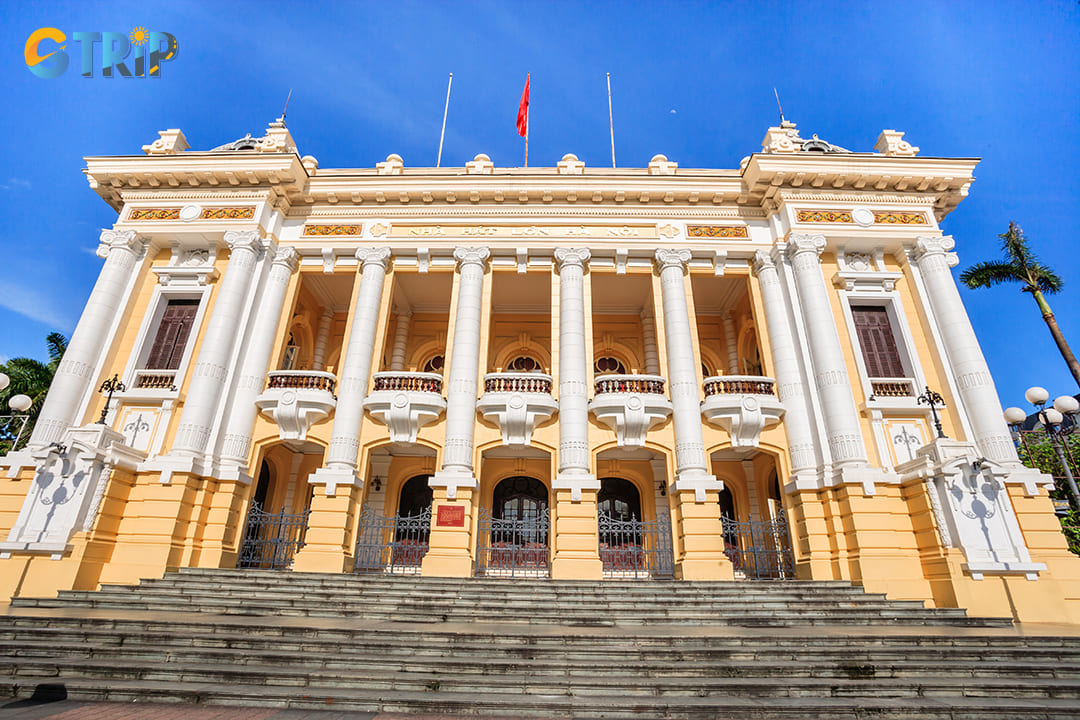
The architectural style reflects the elegance of French colonial architecture, blending European design elements with local influences
Inside, the Opera House presents a lavish interior with high ceilings, marble staircases, and gilded chandeliers. The auditorium, with its horseshoe-shaped seating arrangement, ensures optimal acoustics and clear sightlines. Plush red velvet seats and gold-leaf moldings evoke the opulence of European opera houses. The ceiling’s fresco, painted with classical motifs, adds to the theater’s aesthetic appeal.
During the Hanoi Opera House construction, European materials like Italian marble and French tiles were imported to maintain authenticity. The wooden stage, designed to accommodate orchestras and theatrical productions, remains a focal point for both traditional Vietnamese performances and international events. You can explore various sections of the building during guided tours, which often highlight its architectural details and historical significance.
Hanoi Opera House typically includes backstage access, where guests can see dressing rooms, prop storage areas, and the stage’s intricate pulley system used for elaborate set changes. This behind-the-scenes glimpse reveals the meticulous preparation that brings each performance to life.
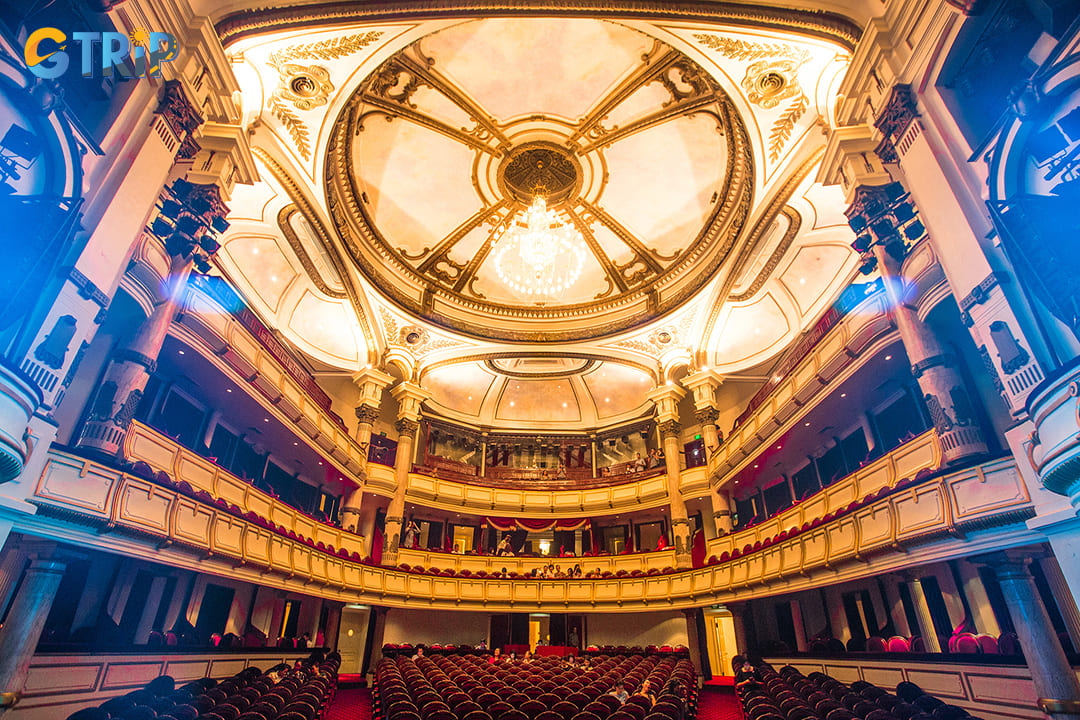
The Opera House presents a lavish interior with high ceilings, marble staircases, and gilded chandeliers
4 things to do at Hanoi Opera House
The Hanoi Opera House guided tour offers an immersive experience that unveils the grandeur and cultural significance of this architectural masterpiece. Located in the heart of Hanoi, this historic venue is a symbol of French colonial influence but also a hub for artistic expression. From admiring its intricate design to witnessing vibrant performances, here are five captivating activities you shouldn’t miss:
1. Watch a Vietnamese traditional music concert
Cultural performances in Hanoi are renowned for their ability to preserve Vietnam’s rich musical heritage. Attending a traditional music concert at the Opera House is an experience like no other. These concerts feature skilled musicians playing age-old instruments such as the dan bau (monochord), dan tranh (zither), and dan nhi (two-string fiddle). Each instrument produces sounds that evoke Vietnam’s natural landscapes and ancient folklore.
The melodies of traditional Vietnamese music are often accompanied by vocal performances that convey tales of love, war, and daily life, passed down through generations. Some concerts also incorporate elements of Vietnamese opera, known as “cheo” and “tuong”, which combine music, singing, and storytelling to create captivating narratives. The acoustics of the Opera House amplify these performances, allowing every note to resonate with clarity and emotion.
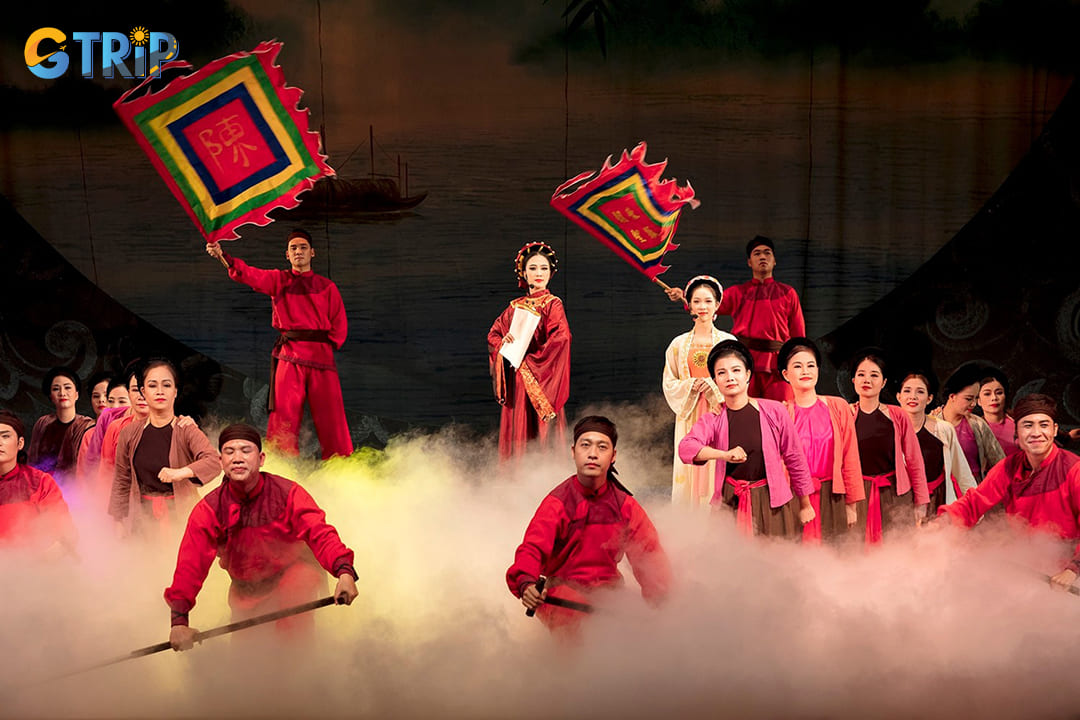
Cultural performances in Hanoi are renowned for their ability to preserve Vietnam’s rich musical heritage
2. Enjoy an opera or ballet performance
For lovers of the performing arts, attending Vietnamese opera performances or a classical ballet at Hanoi Opera House is a must. The repertoire includes both traditional Vietnamese operas and internationally acclaimed productions, performed by talented artists from Vietnam and abroad. Vietnamese opera often portrays historical events and folklore, blending powerful vocals with elaborate costumes and dramatic storytelling.
Ballet enthusiasts can enjoy timeless masterpieces like Swan Lake and The Nutcracker, as well as contemporary productions that showcase innovative choreography. The combination of graceful movements, expressive music, and stunning stage design creates a mesmerizing experience. With its velvet seats, golden balconies, and grand chandelier, the auditorium itself adds to the sense of elegance and sophistication, making every performance feel like a special occasion.
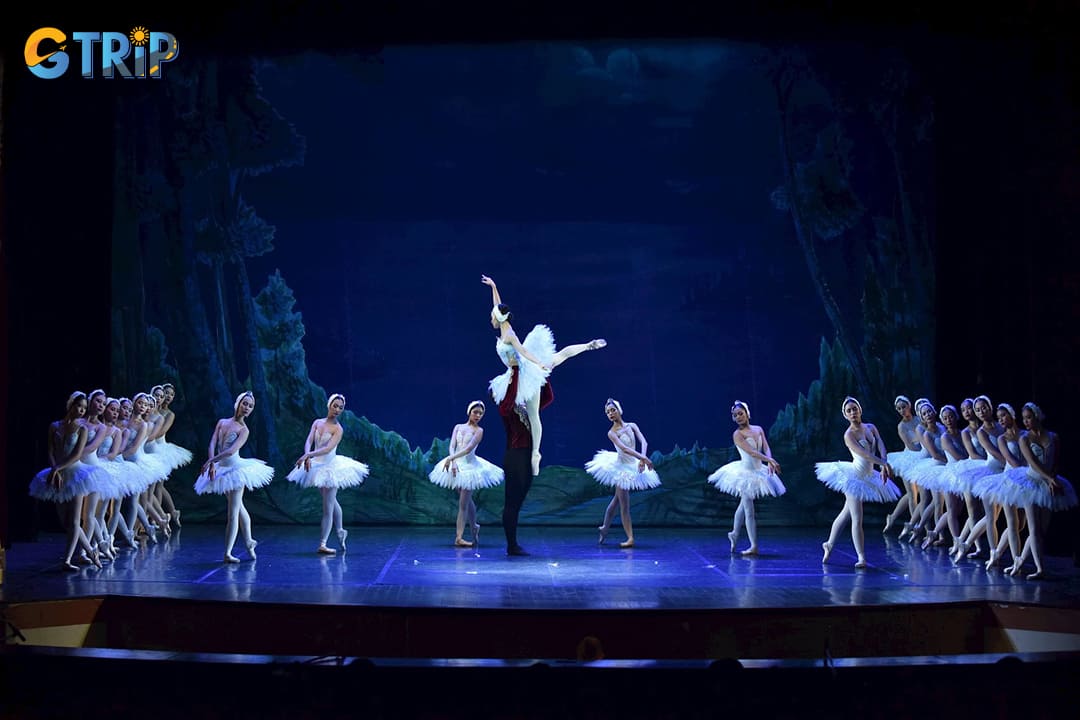
Attending Vietnamese opera performances or a classical ballet at Hanoi Opera House is a must
3. Attend a government or cultural event
Beyond concerts and theatrical productions, the Hanoi Opera House plays a significant role as a venue for government ceremonies and cultural celebrations. These events often include live orchestral performances, award ceremonies, and art festivals that highlight Vietnam’s artistic achievements. For example, the annual Hanoi International Film Festival features screenings of acclaimed films, followed by gala events attended by filmmakers and celebrities.

Live orchestral performances highlight Vietnam’s artistic achievements
People who attend these events gain a deeper understanding of Vietnam’s cultural heritage while witnessing the country’s vibrant contemporary art scene. Additionally, the Opera House occasionally hosts diplomatic receptions and national celebrations, offering a unique opportunity to experience the intersection of art and politics in this historic setting. Each event is carefully curated to showcase Vietnam’s creativity and cultural pride, making it a memorable addition to any visit.
4. Capturing moment of the Hanoi Opera House at night
As evening falls, visit the Hanoi Opera House at night to witness its transformation into a radiant architectural jewel. Illuminated by golden lights, the building’s facade stands out against the dark sky, creating a breathtaking backdrop for nighttime photography. The square in front of the Opera House offers the best vantage point, allowing photographers to capture the entire structure along with the bustling energy of Hanoi’s nighttime streets.
To comply with Hanoi Opera House photography rules, avoid using flash or tripods, as these can disrupt both performances and the ambiance of the area. Instead, experiment with long-exposure shots to capture the warm glow of the lights and the movement of traffic passing by. For a more dynamic composition, frame the Opera House with the surrounding trees or include the fountain in nearby August Revolution Square. These elements add depth and context to your photos, making them more visually compelling. The interplay of light and shadow highlights the building’s architectural details, resulting in striking images that capture the essence of Hanoi’s cultural heart.
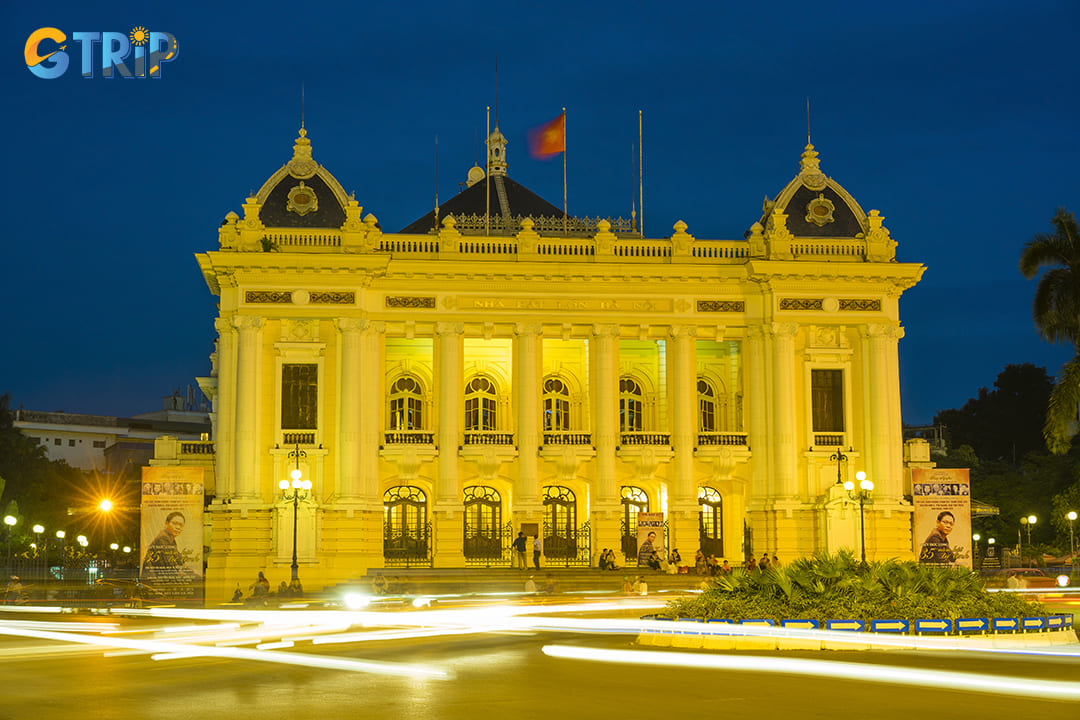
Visit the Hanoi Opera House at night to witness its transformation into a radiant architectural jewel
For tourists looking to capture the perfect selfie, the building’s grand staircase and illuminated facade provide a striking backdrop. Position yourself slightly to the side to include the opera house’s columns and arched windows in the frame. Using the streetlights as natural lighting can create a warm, soft glow on your face, while the building’s lights add depth to the background. Experiment with different angles-try a low-angle shot to emphasize the grandeur of the architecture or a wide-angle selfie to capture both yourself and the entire facade. Group selfies can be taken from the steps leading up to the main entrance, ensuring everyone is framed against the impressive building.
Hanoi Opera House ticket prices and booking guide
Understanding the Hanoi Opera House ticket prices and booking procedures is essential for planning your visit to this iconic cultural landmark. Below is a detailed guide to help you navigate the options available:
Sightseeing tours
As of 2025, the Hanoi Opera House offers guided tours that provide insights into its rich history and architectural grandeur. These tours are typically available from Monday to Sunday, starting at 10:30 AM and lasting approximately 70 minutes. The standard ticket price for the tour is 120,000 VND per person. For an enhanced experience that includes both the tour and live art performance, tickets are priced at 400,000 VND per person, and available from Mondays to Thursdays.
Performance tickets
The Opera House hosts a variety of performances, including classical concerts, ballets, operas, and traditional Vietnamese shows. Ticket prices for these events vary depending on the nature of the performance and seating selection. Generally, prices range from 300,000 VND to 2,000,000 VND. For instance, concerts often have tickets priced between 500,000 and 800,000 VND.
Booking methods
- Online booking: Many performances offer online ticket purchasing through the official Hanoi Opera House website or authorized ticketing partners. This method allows you to select your preferred seats and secure tickets in advance.
- On-site purchase: Tickets can also be bought directly at the Opera House's box office. It's advisable to arrive early, especially for popular shows, to ensure ticket availability.
- Through tour operators: Several tour operators in Hanoi include Opera House performances as part of their cultural tour packages, which may offer added conveniences such as transportation and guided commentary.
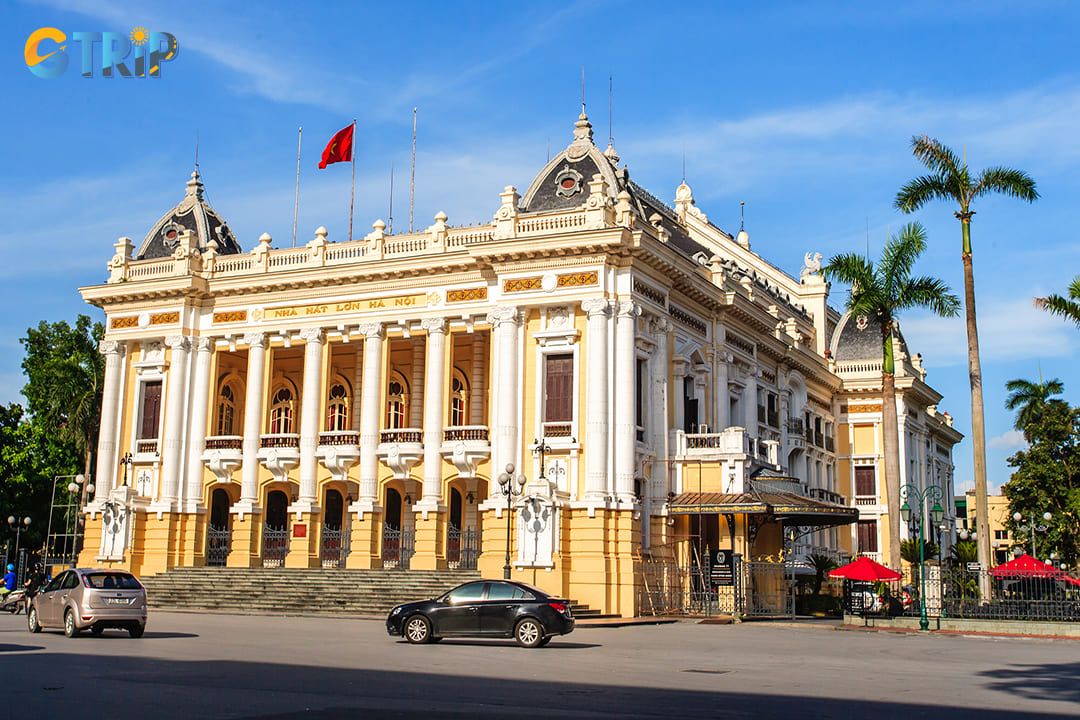
Understanding the Hanoi Opera House ticket prices and booking procedures is essential for planning your visit
How to get to the Hanoi Opera House?
The Hanoi Opera House is a prominent landmark located at 1 Trang Tien Street, in the Hoan Kiem District of Hanoi, Vietnam. Its central position makes it easily accessible through various modes of transportation.
By public bus
Hanoi boasts an extensive bus network that services areas around the Opera House. Several bus routes have stops in close proximity, such as bus numbers: 02, 09, 18, 34, 45, 49. It's advisable to check the latest bus schedules and routes, as they are subject to change.
By taxi or ride-hailing services
Taxis are readily available throughout Hanoi. Alternatively, ride-hailing apps like Grab offer convenient services. Simply input "Hanoi Opera House" as your destination. The fare from popular areas such as the Old Quarter typically ranges from 50,000 to 100,000 VND, depending on traffic conditions.
By motorbike or bicycle
For those seeking flexibility, renting a motorbike or bicycle is a popular choice. Several rental shops in Hanoi offer daily rentals, with motorbikes averaging 100,000 to 150,000 VND per day and bicycles around 50,000 VND per day. Be cautious, as Hanoi's traffic can be dense and challenging for newcomers.
On foot
If you're staying nearby, walking is an excellent way to reach the Opera House. From Hoan Kiem Lake, it's approximately a 10-minute walk along Trang Tien Street. This route allows you to enjoy the city's vibrant atmosphere and explore nearby attractions.
Understanding the various transportation options ensures a smooth journey to the Hanoi Opera House. Once you've planned your route, you can look forward to exploring the nearby attractions that enrich your visit to this historic venue.
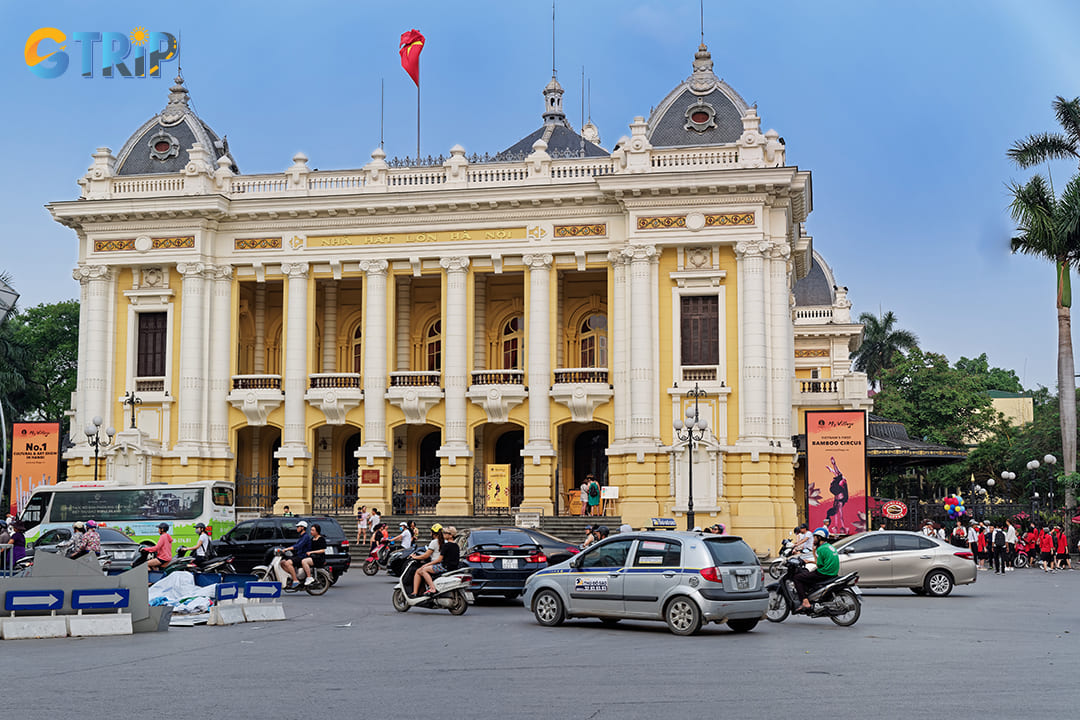
The Opera House’s central position makes it easily accessible through various modes of transportation
Nearby attractions around the Hanoi Opera House
The Hanoi Opera House's nearby attractions offer a blend of cultural, historical, and entertainment experiences, making it a great starting point for exploring the heart of Hanoi. Within a short walking distance, you can discover iconic landmarks, vibrant shopping streets, and local dining spots that add to the city's charm.
Hoan Kiem Lake and Ngoc Son Temple
Located just a 5-minute walk from the Hanoi Opera House, Hoan Kiem Lake is a tranquil oasis that offers a serene escape from the city’s bustling streets. The lake is steeped in local legend, with the story of the Golden Turtle and Emperor Le Loi adding historical significance to the area. You can stroll along the paved paths that circle the lake, enjoy the shade of ancient trees, and capture scenic photos of the water reflecting Hanoi’s skyline.
At the northern end of the lake lies Ngoc Son Temple, accessible via the striking red-painted The Huc Bridge. The temple is dedicated to General Tran Hung Dao, a revered figure in Vietnamese history, as well as the spirits of literature and medicine. Inside, you can explore traditional Vietnamese architecture, intricate altars, and historical artifacts. Early mornings are particularly popular, as locals practice morning exercises around the lake, creating a peaceful and culturally rich atmosphere.
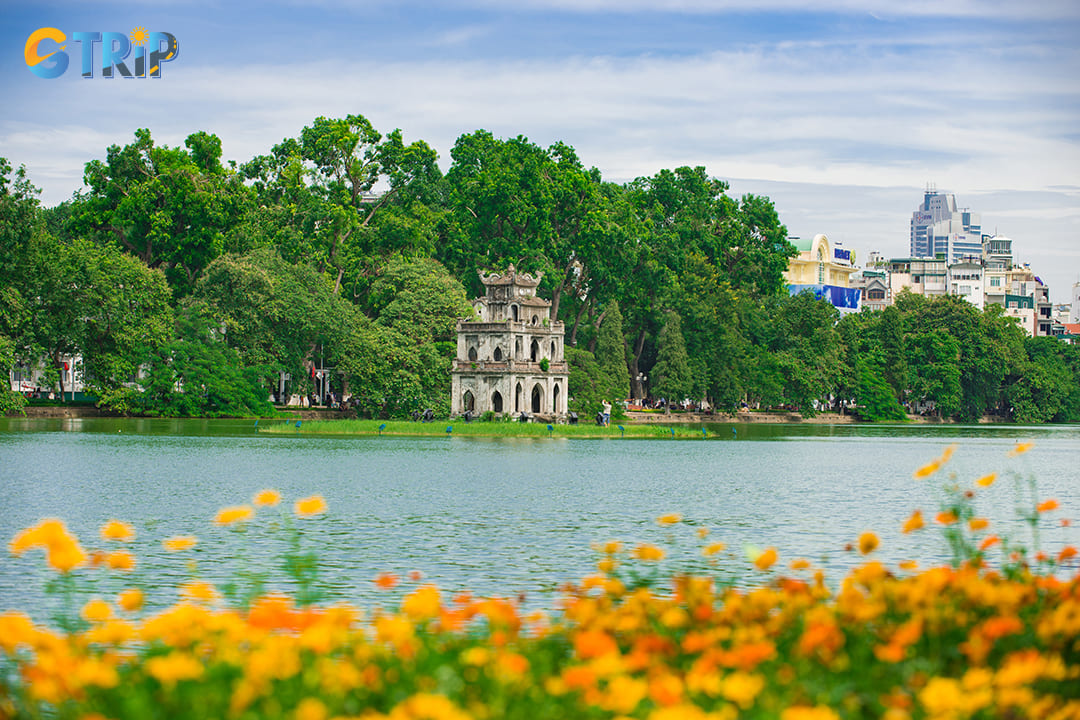
Hoan Kiem Lake is a tranquil oasis that offers a serene escape from the city’s bustling streets
Trang Tien Plaza
Situated near the Hanoi Opera House, Trang Tien Plaza is a landmark of modern luxury shopping in Hanoi. Its French-inspired architecture complements the historical aesthetic of the surrounding area, making it a visually striking destination. The plaza spans multiple floors, housing international brands like Gucci and Louis Vuitton, alongside local designer boutiques that showcase Vietnamese fashion and craftsmanship.
Beyond shopping, Trang Tien Plaza offers a range of dining experiences, from premium cafes with lake views to gourmet restaurants serving both Vietnamese and international cuisine. You can also enjoy seasonal displays and special events that are often held in the building’s central atrium.
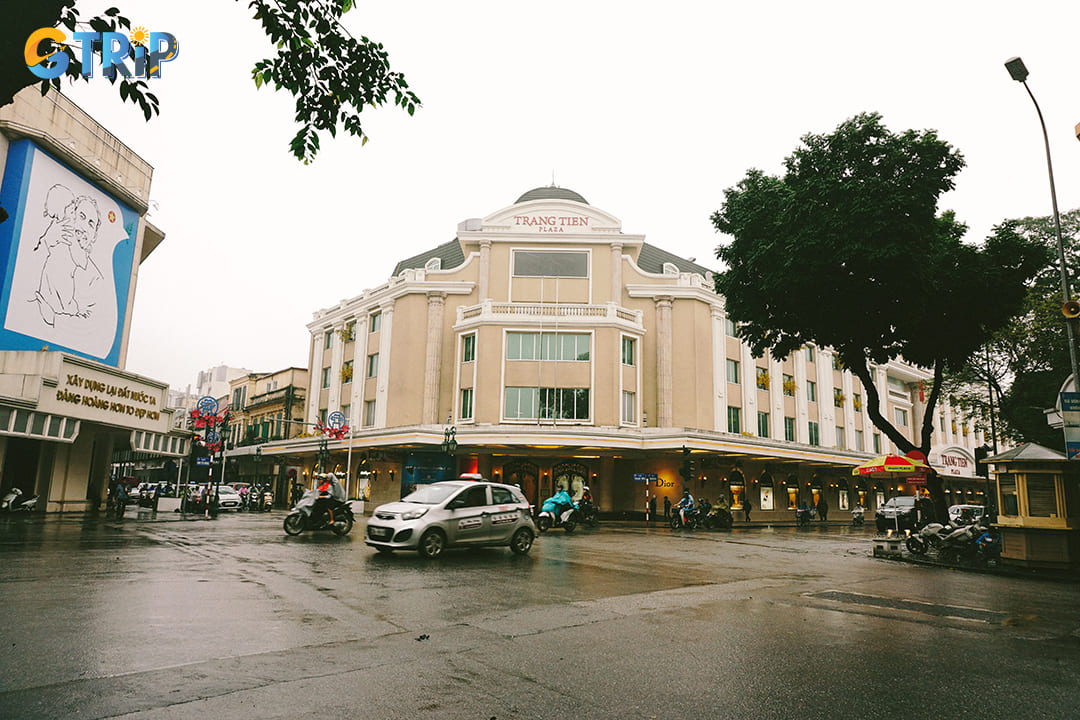
Trang Tien Plaza is a landmark of modern luxury shopping in Hanoi
Vietnamese Women’s Museum
A 10-minute walk from the Hanoi Opera House, the Vietnamese Women’s Museum provides an insightful look into the vital roles women have played throughout Vietnam’s history and culture. The museum’s exhibits are divided into three main themes: Women in Family, Women in History, and Women’s Fashion, each offering a comprehensive narrative through artifacts, photographs, and personal stories.
One of the museum’s highlights is its focus on women’s contributions during wartime, showcasing their bravery and resilience through real-life accounts and historical items. Another key section explores the traditions of Vietnam’s 54 ethnic groups, with displays of intricate textiles, jewelry, and ceremonial attire. The museum’s modern design and interactive exhibits make it both educational and engaging, making it a must-visit for anyone interested in Vietnam’s cultural diversity.
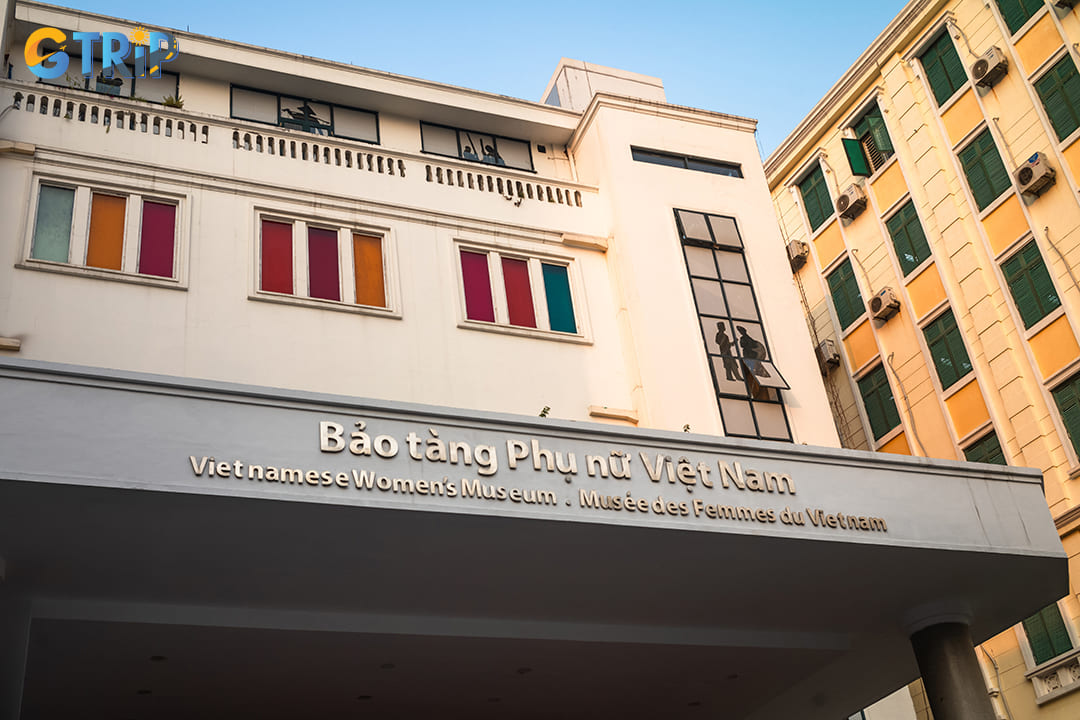
The Vietnamese Women’s Museum provides an insightful look into the vital roles women have played throughout Vietnam’s history and culture
The Old Quarter
For a more immersive experience, head to the Old Quarter, just a 10-minute walk away. This vibrant neighborhood is a sensory delight, filled with authentic Vietnamese street food, bustling markets, and charming boutique shops. Wander through its maze-like streets, where history meets modern life, and discover hidden cafes, centuries-old temples, and traditional craft stores. Hang Bac Street is renowned for silver jewelry, while Hang Gai is the go-to spot for high-quality silk products.

This vibrant neighborhood is a sensory delight, filled with authentic Vietnamese street food
Essential tips for visiting the Hanoi Opera House
Visiting the Hanoi Opera House is a unique experience that requires some preparation.
Dress code and etiquette
Hanoi Opera House is an elegant venue that hosts high-profile performances and events. While there is no strict formal dress code for daytime visits, smart casual attire is recommended. For evening performances, guests should dress appropriately:
- Men: Long pants, collared shirts, and closed-toe shoes are ideal.
- Women: Dresses, skirts, or smart trousers with blouses are suitable.
- Avoid: Shorts, tank tops, flip-flops, and overly casual clothing, especially for evening shows.
Audience members are expected to maintain decorum inside the opera house. Talking loudly, using mobile phones, or arriving late can disrupt performances.
Photography tips for the best shots
Capturing the grandeur of the opera house requires attention to lighting and angles. Here are some Hanoi Opera House photography tips:
- Exterior shots: The best views are from the square in front of the building, especially during sunset when the golden hues enhance the architecture.
- Night photography: The opera house is beautifully illuminated at night, making it a prime subject for long-exposure shots.
- Inside the venue: Photography is usually restricted during performances, but you can take pictures in the lobby and outside the auditorium.
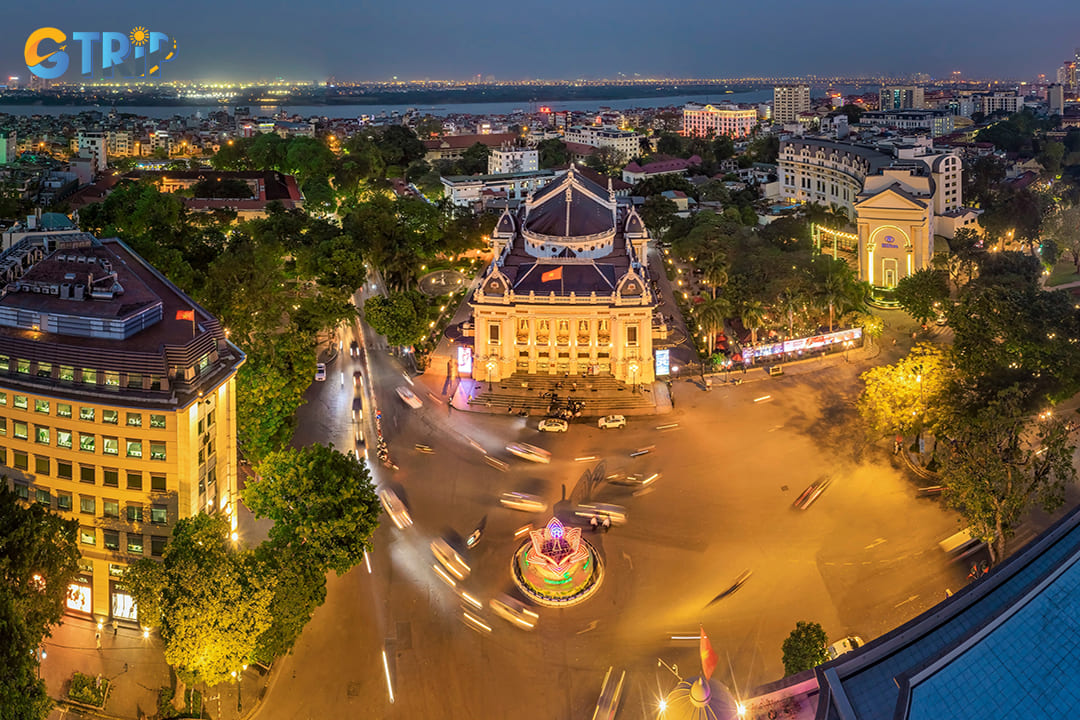
Visiting the Hanoi Opera House is a unique experience that requires some preparation
Read more:
Experiencing a performance at Hanoi Opera House offers more than just entertainment, it’s a glimpse into Vietnam’s artistic excellence and cultural heritage. You can explore nearby attractions, enjoy local cuisine, and take in the vibrant atmosphere of Hanoi’s cultural district. For those planning a trip to Hanoi, GTrip - Vietnam Travel Agency offers curated Ha Noi tours that include visits to iconic landmarks, hidden cultural gems, and immersive local experiences.

